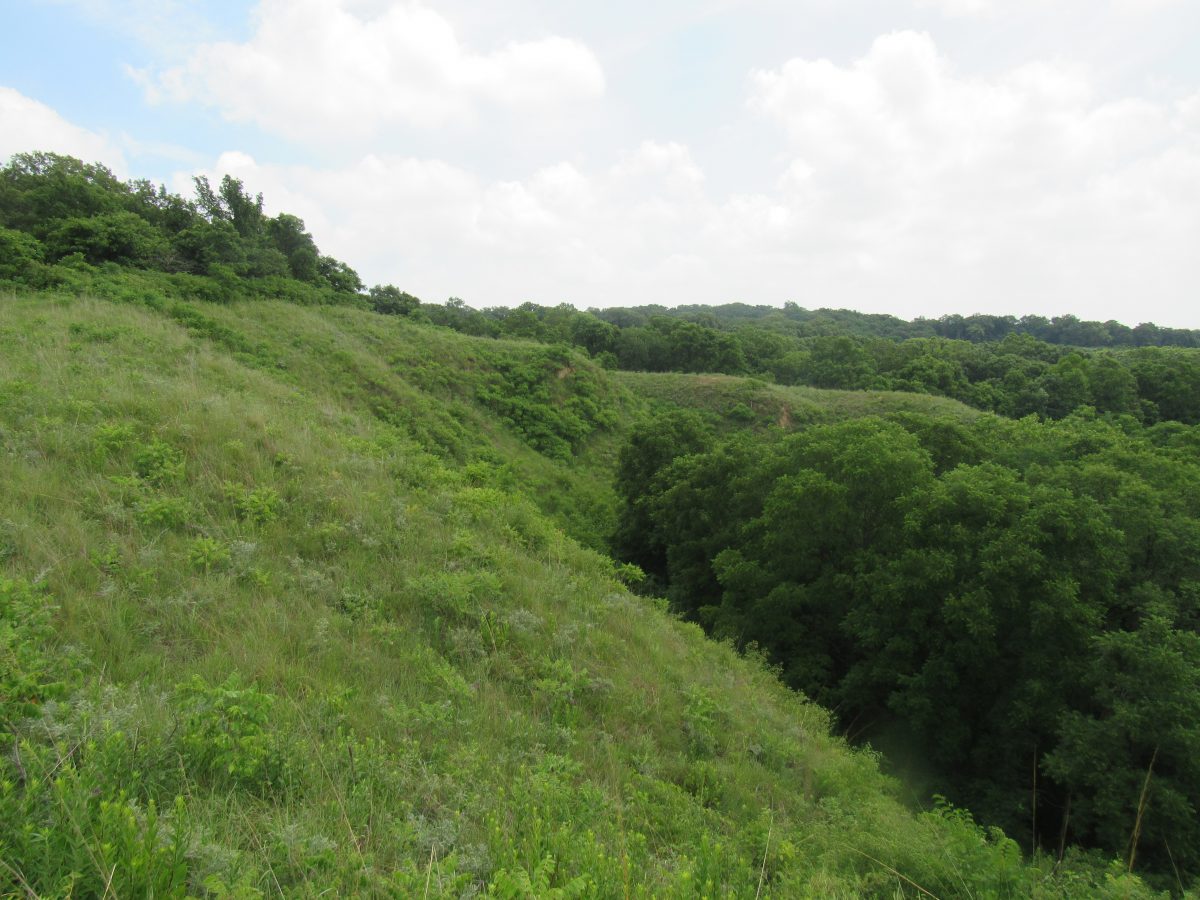There are few places in central Illinois where cactus is one of the most common plants. Yet this is the situation in one of the wildest counties in Central Illinois, Mason County. Here, the flat, black earth that lies under most of Central Illinois is replaced by sand. This island of sand in a sea of loam is home to plants and animals found nowhere else in Illinois. Why, you may ask, is there so much sand everywhere in Mason County? As usual when discussing geology in Illinois, glaciers come into play. The same glaciers that flattened our farmlands also carved the Illinois River Valley with their melting waters. The sediments torn up by the waters of the melting glacier were deposited in Mason County as a great mass of sand. This sand eroded, over time, into dunes and ridges.
Early farmers could not farm the dry sand dunes of Mason County, so they cultivated the swampy, marshy floodplains along the river, where lakes and sloughs held thousands of wild fish and game, albeit at the cost of irregular flooding. Until the introduction of modern irrigation and flood control methods in the early 1900s, this area could not be farmed. As a result, much of the natural landscape was preserved, and has lasted into the modern day in the form of several nature preserves, a state forest, and a national wildlife refuge.
I discovered this area in May 2016, on a trip back from Peoria. An hour’s drive from my hometown of Springfield, Mason County has, over the course of a single summer, become an area I have explored on numerous occasions. Perhaps the easiest place to begin is in Sand Ridge State Forest, where I was first introduced to this area. In the 1930s, the Illinois Division of Forestry, in association with the Civilian Conservation Corps, planted thousands of pine trees on the sandy dunes, in order to create a lumber industry. The pine trees flourished, and they are now being removed from some areas, they have grown so prolifically. The open pine woodlands and fields at Sand Ridge State Forest make it easily accessible to the public, and a great place to get used to the oddity of finding cactus everywhere. A single species of cactus, the Eastern Prickly-Pear, grows everywhere in Mason County’s sandy areas. The cacti flower after rains in late June, and the flowers, as wide as the palms of my hand, light up the dry plains.
Inside Sand Ridge State Forest is one of the driest areas in Illinois, Henry Allan Gleason State Nature Preserve. Named after a prominent botanist who did much research in this area, H.A. Gleason Preserve resembles nothing so much as a section of desert placed in the middle of Illinois. It is difficult to get into this area, but here is one of the few places to find reptiles like the Six-lined Racerunner lizard, one of the hardest animals to photograph in Illinois. These small, swift lizards live along the edges of the dunes, scurrying away faster than I can walk. These, and dozens of other rare and unusual animals and plants, live on these isolated sand dunes.
Nearby, in a complete change of scenery, lies one of the largest wetlands in the Midwest, Chautauqua National Wildlife Refuge (abbreviated NWR). Gone is the desert scenery, as a large, shallow lake is the centerpiece of Chautauqua NWR, containing thousands of Illinois’ most spectacular animals, insects and especially birds. Here, some of the rarest birds in Illinois live, including the unusually long-legged Black-necked Stilt. These birds are in a group of birds called sandpipers, wetland birds recently popularized by a Pixar short film attached to the movie Finding Dory. Chautauqua NWR is a major stopover point, serving the sandpipers in the same way a gas station serves a truck driver- a place to rest and refuel. Similarly, all of Illinois’ swallow species can be found here at one point or another, chasing the flies over the lake. In addition to sandpipers and swallows, this area provides a habitat for hundreds of thousands of ducks and geese, especially during the winter months. Similarly, dragonflies and butterflies migrating southwards use this area, to the extent that I’ve never seen more butterflies anywhere else in the wild than on the levees here. Pelicans, too, are quite common here, dipping their enormous bills in the shallow lake waters. Chautauqua Natural Wildlife Refuge is one of the finest areas in Illinois to watch species migrate.
In the southern part of Mason County, the land rises up about two hundred feet, before collapsing back down into the Sangamon River Valley. Part of this is preserved in the Revis Hill Prairie Nature Preserve. On this steep hillside, some of the rarest insects, plants, and reptiles in Illinois live out their lives. Several of the insect species found here are only found here in the entire state. Furthermore, from the top of the prairie, you can see for miles over the flat cornfields to the south.
There are many other nature preserves in Mason County. These are but a few of the most spectacular, a word not often used to describe nature in Illinois. Thanks to the difficulty of farming this rugged land, Mason County’s scenic natural areas have remained intact, perfect places to explore nature.
Jared Gorrell can be reached at [email protected]





